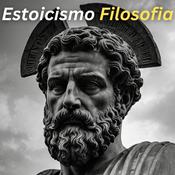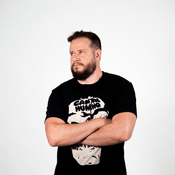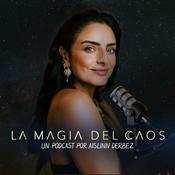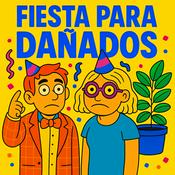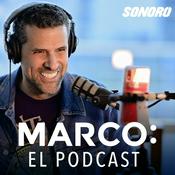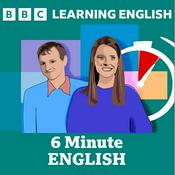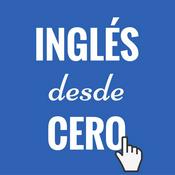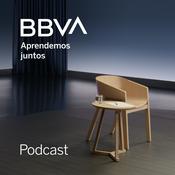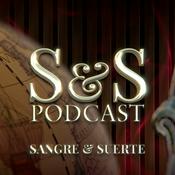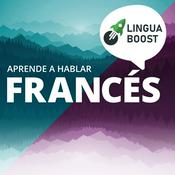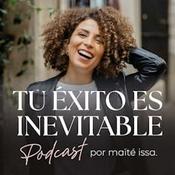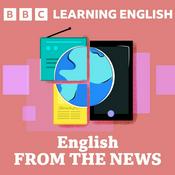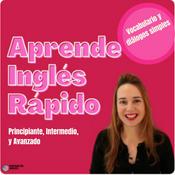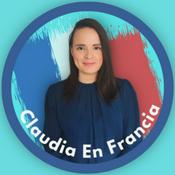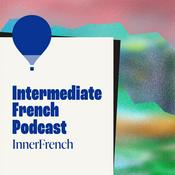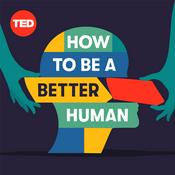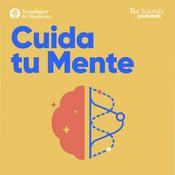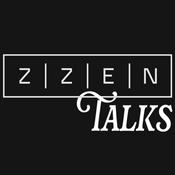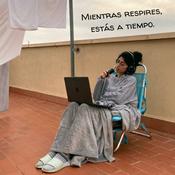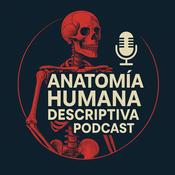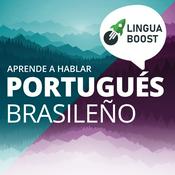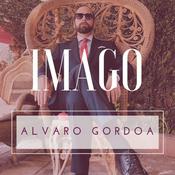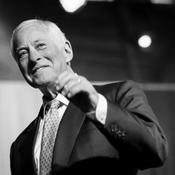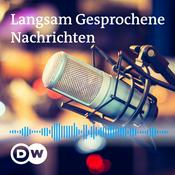293 episodios
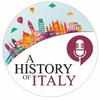
198 - Giovanni dalle Bande Nere part 3: Pietro Aretino and shot down in a blaze of glory
09/12/2025 | 19 min
In this episode, we trace the final chapters in the life of Giovanni dalle Bande Nere, the last great condottiero of Renaissance Italy, and his unlikely, enduring friendship with the scandalous writer Pietro Aretino. From political satire in Rome to blood-soaked battlefields in Lombardy and Umbria, this story intertwines art, warfare, ambition, and the sweeping changes that transformed European conflict forever.Key Topics CoveredPietro Aretino: Scandal, Satire & SurvivalEarly life in Arezzo, his refusal of his father’s name, and his rise as a sharp-tongued writer and showman in the papal court of Leo X.The “talking statues” of Rome—especially Pasquino—and how Aretino’s biting pasquinades shaped political discourse.His alignment with Giulio de’ Medici (future Pope Clement VII), flight after the election of Hadrian VI, and continued clashes with papal officials.The scandal of the erotic engravings of Giulio Romano, ensuing arrests, and Aretino’s provocative “lustful sonnets.”His stabbing in Rome, survival, and eventual wanderings through Mantua and finally Venice, where he spent the last decades of his colourful life.His literary legacy, including La Cortigiana and the Ragionamenti, with their unfiltered depictions of sex, society, and the hypocrisy of his age.Giovanni dalle Bande Nere: Rise, Glory, and Decline of the CondottieriGiovanni’s campaigns under various Italian powers and his growing reputation as a fearless and impulsive commander.His service to Pope Leo X and later Hadrian VI, including action against the Baglioni in Umbria and the dramatic siege at Passignano.Giovanni’s early brushes with imperial interest—and his surprising decision to instead enter French service under Francis I.The Battle of Bicocca (1522): a turning point in military history marking the decline of heavy cavalry and mercenary companies in the face of firearms and artillery.Giovanni’s wounding at Pavia and the involvement of two remarkable physicians: Berengario da Carpi and Abraham of Mantua.His turbulent finances, reckless habits, and the selling of Aulla, which ended his dream of carving out a hereditary domain.Increasing tensions caused by his Black Bands as they created chaos across Tuscany and Emilia.The League of Cognac & Giovanni’s Final CampaignThe formation of the anti-imperial League of Cognac (1526): Italy and France united against Charles V.Giovanni’s renewed service—accompanied once more by Aretino—and widespread hopes that he might become the Italian hero capable of unifying the peninsula.Frustration with Duke Francesco della Rovere’s hesitant leadership and obstacles created by Italian rivalries, especially the Este of Ferrara.Giovanni’s last victory at Governolo near Mantua.His mortal wounding from a hidden sniper’s shot—ironically not from the artillery that was reshaping warfare—and the dramatic amputation performed by Dr. Abraham.Giovanni’s final days, the legendary accounts of his stoicism, and his death at just 28 years old.Aftermath & LegacyThe consequences of Giovanni’s death: the failure of the League of Cognac to stop the imperial advance and the catastrophic Sack of Rome in 1527.The continuation of the Black Bands under Pier Maria de’ Rossi—and Maria Salviati’s refusal to let young Cosimo join them as a mascot.Giovanni’s relocation from Mantua to Florence and his enduring presence in the city’s memory.A glimpse of his statue near the Uffizi, standing guard toward the Arno—a symbolic link to his son, Cosimo I, future Grand Duke of Tuscany.Why This Story...

197 - Giovanni of the Black Bands part II - The invincible very naughty boy
11/11/2025 | 14 min
Episode SummaryPicking up where we left off, Giovanni de’ Medici, son of Caterina Sforza and known to history as Giovanni of the Black Bands, continues his meteoric rise through the bloody and chaotic world of Renaissance warfare. Backed by a Medici pope and driven by his fierce loyalty to his men, Giovanni’s legend as a mercenary commander — and his troubles with the powerful Medici family — only grow.Host Mike Corradi unpacks the dangerous charisma, discipline, and contradictions of this larger-than-life condottiero: a man both feared and admired, ruthless yet loyal, reckless yet revered. From duels and executions to daring river crossings and political intrigue, this episode captures Giovanni at the height of his brutal glory.What You’ll Hear in This EpisodeFrom Soldier to Legend – How Giovanni built the feared and disciplined Black Bands, and the tough standards that made them famous.Mercenary Life in Renaissance Italy – The realities of the “condotta” contract system, pay, discipline, and the fine line between soldiers and extortionists.A Code of Blood and Brotherhood – Giovanni’s uncompromising justice, personal duels, and brutal loyalty to his men.Exile and Recklessness – The duel with Camillo d’Appiano, murders in Florence, and yet another banishment for the restless Medici captain.Back to War – Giovanni’s return to papal service, his victories in the Marche, and the death of Pope Leo X — when his men finally took the name The Black Bands.The Battle of Vaprio (1521) – A daring river crossing, a sleeping French commander, and a crucial victory that spared Milan from destruction.Family and Bloodlines Again – Giovanni’s rescue of his stepsister Bianca Riario, echoing his mother Caterina’s courage.A New Companion – The arrival of Pietro Aretino, the scandalous writer and provocateur, whose influence on Giovanni we’ll soon discover.Key FiguresGiovanni de’ Medici “of the Black Bands” – The fearless condottiero whose name became a legend.Pope Leo X (Giovanni de’ Medici) – The Medici pope whose death marked a turning point for Giovanni’s army.Maria Salviati – Giovanni’s long-suffering wife, holding the family together in his absence.Prospero Colonna – The respected general under whom Giovanni fought, and a link to the fall of Cesare Borgia.Bianca Riario – Giovanni’s stepsister and loyal supporter, mirroring their mother’s fierce independence.Pietro Aretino – The notorious writer and satirist soon to become Giovanni’s newest and most scandalous ally.Highlights & InsightsThe discipline and image of the Black Bands as a symbol of military professionalism.Giovanni’s ruthless moral code: loyalty rewarded, betrayal punished — often fatally.The economic and moral contradictions of the condottieri trade.How personal honour and vendetta shaped early 16th-century warfare.The seeds of change as firearms began to replace the medieval knight.Closing ThoughtAs Giovanni’s fame and ferocity spread across Italy, his world teeters between the medieval and the modern — where mercenary loyalty, family honour, and the politics of popes collide.But with the arrival of a new friend — and bad influence — in Pietro Aretino, Giovanni’s story is about to take an even darker and more dangerous...

Call for contributions: episode 200 and 8th anniversary
01/11/2025 | 1 min
Hello You! for our 220th and 8th anniversary episode I thought I would invite contributions from the most VIP I could think of... YOU!So please send in a sound file or, if you don't feel like it, written message with a contribution, consideration, question, something i didn't mention or talk about enough.Please send by 31st December at the very latest.

196 - Giovanni of the Black Bands part 1: birth of a legend
21/10/2025 | 17 min
In this episode, we reunite with an old friend of the show — Caterina Sforza, the indomitable “Tigress of Forlì.” From her, we follow the turbulent and violent early life of her son, Giovanni de’ Medici, known as Il Gran Diavolo — the Great Devil — a man whose passions, battles, and excesses would shape the future of both the Sforza and Medicidynasties.We go through the tangled lineage and fiery temperament of one of Renaissance Italy’s most fascinating figures, tracing his path from rebellious youth to feared mercenary captain — and father to the first Grand Duke of Tuscany.What You’ll Hear in This EpisodeThe Birth of “Il Gran Diavolo” (1498) – Giovanni’s birth to Caterina Sforza and Giovanni “Il Popolano” de’ Medici, and the prophetic words that would define his life.A Child of Chaos – His mother’s imprisonment by Cesare Borgia, his custody battles, and his violent childhood in Florence.Love, Blood, and Family Ties – The marriage to Maria Salviati uniting two Medici branches, and the domestic discord that followed.A Life of War and Vice – Duels, brothel fights, noble feuds, and the infamous bridge incident with the Orsini family.From Rogue to Commander – His rise through the papal ranks, battlefield heroics, and growing legend as a fearless condottiero.The Birth of Cosimo de’ Medici (1519) – The long-awaited heir who would one day found the Grand Duchy of Tuscany, born amid firelight celebrations across Italy.Key FiguresCaterina Sforza – The formidable mother whose courage and intellect defined Giovanni’s heritage.Giovanni de’ Medici “Il Popolano” – His father, from a cadet branch of the Medici family.Maria Salviati – His loyal but neglected wife.Giovanni della Stufa – The inseparable and scandalous companion.Pope Leo X – Patron, relative, and pivotal figure in Giovanni’s military career.Cosimo de’ Medici – The son who would carry the Medici name to new heights.Closing ThoughtFrom Caterina’s fierce independence to Giovanni’s reckless courage, this episode explores how blood, loyalty, and ambition intertwined in the crucible of Renaissance Italy — giving rise to a new generation destined to rule.

195 - Italian Wars 12 - The sack of Rome (again) and the end of the Sforza (1526 - 1530)
07/10/2025 | 18 min
In this episode, we pick up with Emperor Charles V consolidating his power over Italy after the Battle of Pavia (1525), where the French king Francis I was captured. The uneasy Italian states, including Pope Clement VII (Giulio de’ Medici), soon realized they had traded one master for another and formed the League of Cognac (1526) — an anti-imperial alliance including France, Venice, Florence, the Papal States, Milan, and under English protection, Henry VIII.The league’s formation was steeped in intrigue, false pretenses, and even secret dealings with the Turks. One of Charles’s own commanders, the Marquis of Pescara, pretended to side with the league while feeding the emperor inside information.Meanwhile, Giovanni dalle Bande Nere, the famed mercenary from the Medici-Sforza line, met his end in battle, struck by artillery supplied by the duplicitous Duke of Ferrara. His death marked the fading of Italy’s old mercenary tradition — and one of its most charismatic figures.When the pope attempted to back away from the alliance, Charles’s allies struck at Rome. The Sack of Rome (1527)followed — a devastating episode where mutinous Landsknechts, many of them fervent Lutherans, unleashed horrific violence on the city. For days, the Eternal City was ravaged: thousands slaughtered, churches desecrated, art looted, and the Renaissance dream in Rome brutally extinguished. Pope Clement VII barely escaped to Castel Sant’Angelo, thanks to the sacrifice of his Swiss Guards.In the chaos that followed, the Papal States collapsed, local lords reclaimed their territories, and the Medici were expelled from Florence, where a new republic was declared — with Jesus Christ symbolically named as its king.Ultimately, Charles V and Clement VII reconciled. Political realism won out over ideology. Through the Treaties of Barcelona (1529) and Bologna (1530), the Italian Wars entered a quieter phase, and imperial dominance over Italy was secured.We close with the final chapter of the Sforza dynasty: Francesco II Sforza, the last Duke of Milan, whose death in 1535marked the end of an era — from the rise of the free communes to the age of dynastic rule and foreign domination.
Más podcasts de Educación
Podcasts a la moda de Educación
Acerca de A History of Italy
Escucha A History of Italy, Estoicismo Filosofia y muchos más podcasts de todo el mundo con la aplicación de radio.net

Descarga la app gratuita: radio.net
- Añadir radios y podcasts a favoritos
- Transmisión por Wi-Fi y Bluetooth
- Carplay & Android Auto compatible
- Muchas otras funciones de la app
Descarga la app gratuita: radio.net
- Añadir radios y podcasts a favoritos
- Transmisión por Wi-Fi y Bluetooth
- Carplay & Android Auto compatible
- Muchas otras funciones de la app


A History of Italy
Descarga la app,
Escucha.
